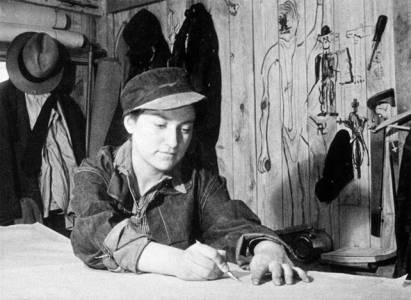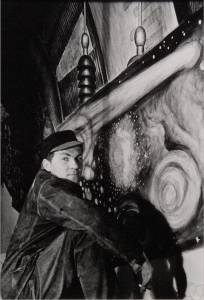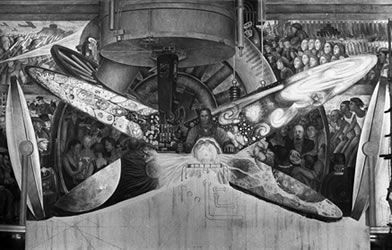Nelson A. Rockefeller to Diego Rivera, May 4th, 1933, New York, from: Wolfe, The Fabulous Life of Diego Rivera (dieser beitrag wurde verfasst in: englisch)
eingetragen von Alex Winiger am 16.03.2016, 10:34 (email senden)
While I was in the No. 1 building at Rockefeller Center yesterday viewing the progress of your thrilling mural. I noticed that in the most recent portion of the painting you had included a portrait of Lenin. This piece is beautifully painted but it seems to me that his portrait, appearing in this mural, might very easily seriously offend a great many people. If it were in a private house it would be one thing, but this mural is in a public building and the situation is therefore quite different. As much as I dislike to do so I am afraid we must ask you to substitute the face of some unknown man where Lenin's face now appears.
You know how enthusiastic I am about the work which you have been doing and that to date we have in no way restricted you in either subject or treatment. I am sure you will understand our feeling in this situation and we will greatly appreciate your making the suggested substitution.
With best wishes, I remain sincerely,
Nelson A. Rockefeller
Diego Rivera to Nelson A. Rockefeller, May 6th, 1933, New York, from: Wolfe, The Fabulous Life of Diego Rivera (dieser beitrag wurde verfasst in: englisch)
eingetragen von Alex Winiger am 16.03.2016, 10:34 (email senden)
In reply to your kind letter of May 4, 1933, I wish to tell you my actual feelings on the matters you raise, after I have given considerable reflection to them.
The head of Lenin was included in the original sketch now in the hands of Mr. Raymond Hood [the RCA buildings' architect], and in the drawings in line made on the wall at the beginning of my work. Each time it appeared as a general and abstract representation of the concept of leader, an indispensable human figure. Now, I have merely changed the place in which the figure appears, giving it a less real physical place as if projected by a television apparatus. Moreover, I understand quite thoroughly the point of view concerning the business affairs of a commercial public building, although I am sure that the class of person who is capable of being offended by the portrait of a deceased great man, would feel offended, given such a mentality, by the entire conception of my painting. Therefore, rather than mutilate the conception, I should prefer the physical destruction of the conception in its entirety, but preserving, at least, its integrity.
In speaking of the integrity of the conception, I do not refer only to the logical structure of the painting, but also to its plastic structure.
I should like, as far as possible, to find an acceptable solution to the problem you raise, and suggest that I could change the sector which shows society people playing bridge and dancing, and put in its place in perfect balance with the Lenin portion, a figure of some great American historical leader, such as Lincoln, who symbolizes the unification of the country and the abolition of slavery, surrounded by John Brown, Nat Turner, William Lloyd Garrison or Wendell Phillips and Harriet Beecher Stowe, and perhaps some scientific figure like McCormick, inventor of the McCormick reaper, which aided in the victory of the anti-slavery forces by providing sufficient wheat to sustain the Northern armies.
I am sure that the solution I propose will entirely clarify the historical meaning of the figure of leader as represented by Lenin and Lincoln, and no one will be able to object to them without objecting to the most fundamental feelings of human love and solidarity and the constructive social force represented by such men. Also it will clarify the general meaning of the painting.


